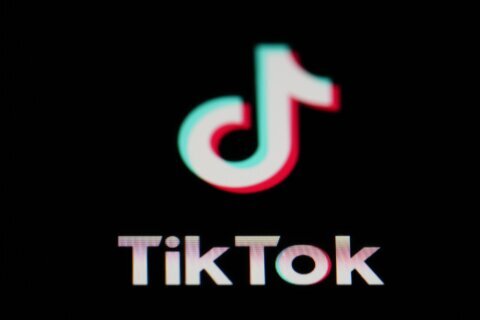After years of fits and starts, Instacart has gone through the initial public offering checkout line and come out as one of the most talked-about IPOs of 2023. On Aug. 25, the company filed the requisite paperwork with the U.S. Securities and Exchange Commission, noting its trading symbol would be “CART” and that it would trade on the Nasdaq Global Select Market.
[Sign up for stock news with our Invested newsletter.]
Founded in 2012, San Francisco-based Maplebear Inc., doing business as Instacart, is scheduled to open trading this coming week, with Sept. 19 as the most likely date it will price its IPO, according to Wall Street insiders. The company is looking to raise $660 million by selling shares of its common stock, according to an updated SEC filing on Sept. 15. Instacart raised this level from a range of $594 million to $616 million in its earlier filing, following Arm Holdings PLC’s (ticker: ARM) successful IPO on the Nasdaq this week.
Here’s what you need to know about Instacart’s IPO, financials and prospects:
— What Instacart does.
— What Instacart’s financials look like.
— Instacart’s valuation and opening share price.
— CART advanced trading and early buyers.
— Takeaway on the Instacart IPO.
What Instacart Does
Instacart is a digital grocery shopping fulfillment platform that uses freelance contractors, who pick from grocery shopping list requests in their area, to fulfill the lists and deliver them to customers. Instacart partners with more than 1,400 retail banners to make that happen.
Buying groceries online isn’t new, but Instacart has popularized it in a way that has provided a much wider array of options, with a much shorter lead time between order placement and delivery.
“The beauty of Instacart is that it allows consumers to shop for food from the convenience of their home,” says Jeremy Bohne, founder of Paceline Wealth Management in Boston. “Earlier on, many people saw the service as a luxury, but during the pandemic, many people began to consider it a necessity.”
One of the company’s most notable strengths is its cutting-edge innovations, such as incorporating generative artificial intelligence into its business.
“The company has incorporated a plugin for ChatGPT to further strengthen this value proposition,” says Nir Kshetri, a management professor at the University of North Carolina-Greensboro. “This tool is expected to increase the speed and efficiency of ordering groceries online and should further exploit the value proposition already being provided to customers.”
In March 2023, Instacart announced that it had teamed up with Open AI to build an “Ask Instacart” feature powered by ChatGPT.
“Here, the company aims to enhance the conversational aspect of the Instacart app’s search function by implementing an AI chat feature,” Kshetri says. “Utilizing AI, the company provides personalized recommendations as customers add items to their ‘intelligent’ shopping cart.”
Additionally, Instacart is conducting real-time tests of promotions, including two-for-one deals, to determine their effectiveness. “While the company has already achieved double-digit grocery sales growth for the past several years, generative artificial intelligence deployment may further accelerate the growth,” Kshetri adds.
What Instacart’s Financials Look Like
Instacart reported its sales for the first half of 2023 stood at nearly $1.5 billion, a 31% gain over the same period in 2022. Net income was $242 million compared with a loss of $74 million in the prior-year period.
The company already had benefited from the pandemic and resulting lockdowns in 2020-2021, as consumers were forced inside and began ordering grocery deliveries in massive numbers. In the pandemic years, Instacart’s revenues rose from $214 million per year before the lockdowns to $1.5 billion in 2020.
The company largely supported those numbers as the pandemic faded, reporting revenues of nearly $2.6 billion in 2022 (up 39% year over year), followed by robust revenue gains in 2023 through June 30.
“From financials disclosed in their IPO prospectus, CART indicates a substantial amount of net income during 2022, though this is the result of a large tax credit,” Bohne says. “During the first half of 2023, Instacart turned a corner and began to produce profits from their ongoing operations, which would be a logical explanation for the timing of their anticipated IPO.”
Overall, Bohne calls Instacart “a dominant player” in grocery technology, partnering with stores that account for 85% of the grocery industry in the U.S.
In the meantime, Instacart is moving away from its dependence on delivery services to focus on online advertising as well, and ads and other sources made up 30% of Instacart’s total revenue last year.
Instacart’s Valuation and Opening Share Price
Once CART does go public, it should start trading in a range of $28 to $30 per share, up from an earlier target of $26 to $28. The change in share price is a 7% to 8% increase.
Valuation has a huge impact on calculating a company’s opening IPO trading price. Before an IPO can kick off, new public companies like Instacart must be rigorously vetted by the underwriting banks — led by Goldman Sachs Group Inc. (GS) in Instacart’s IPO — and by the SEC.
While the SEC will focus on regulatory and compliance issues, the lead underwriter will, among its other IPO-preparation duties, calculate a fair and balanced starting price for when company shares begin trading publicly. Once that price is calculated, it formulates an IPO valuation for the newly public company.
Typically, underwriters working with a company will focus on the following factors when calculating a per-share price:
— The number of shares sold in the new public offering.
— How a company operates, how good its products are, and what its management team looks like.
— A current price comparison of stock prices among existing publicly traded companies in its industry.
— An IPO company’s short- and long-term growth prospects.
— A company’s financial model and how it works.
— Basic overall competitive market trends, especially in the IPO company’s own sector.
— Estimated demand for the IPO company’s stock.
Instacart’s initial share price is already higher than recent expectations, given improving market conditions and the fact that new public offerings are ticking upward in 2023. Through Sept. 14, the benchmark Renaissance IPO ETF (IPO, an exchange-traded fund) is up over 34.5% for the year, compared with 17.3% for the S&P 500.
Instacart’s valuation has gone from between $8.6 billion and $9.3 billion to a target of up to $10 billion as of Sept. 15. That’s still a far cry, though, from the company’s reported valuation of $39 billion calculated during a 2021 funding round.
CART Advanced Trading and Early Buyers
Instacart has already lined up interested institutional buyers who will likely set the tone for the IPO’s performance, which is a common practice with new IPOs.
For example, food and beverage giant PepsiCo Inc. (PEP) has agreed to buy $175 million in CART preferred stock in a pre-IPO private placement deal.
Other early investors who’ve committed to buying shares include Sequoia Capital, Valiant Management and Norges Bank Investment Management, which round out a “heavy hitters” investment group that will seek to sell 7.9 million shares of Instacart stock. The company itself is looking to sell 14.1 million shares during the IPO, for a total of 22 million shares.
Takeaway on the Instacart IPO
Some headwinds could hamper CART’s growth out of the gate, most notably due to its own industry’s historical performance with investors.
“Grocery is the largest category of retail consumer spending, but it has been one of the slowest to transition from in-person to online sales,” Bohne says. “During the period of 2009 to 2019, online sales grew from 1% to 3% of all groceries, but increased from 3% to 12% during the period of 2019 to 2022. Instacart has been effective in growing (its) footprint, but the pandemic likely played a large factor in this sudden growth, too.”
On the upside, Instacart doesn’t have a great deal of competition.
“Online grocery sales and at-home delivery aren’t new, but most others are a service tied to a single store, and because they arrive on a store-owned delivery truck, deliveries tend to be scheduled farther in advance,” Bohne notes.
The stiffest competition Instacart may face is not another online competitor, but in-store sales.
“Instacart provides a valuable service, but for many families, the cost is out of reach,” Bohne says. “Instacart’s business model will be tested the next time there is a recession, when consumers tend to cut back on spending.”
People won’t stop buying groceries, but buying them in the store can be a lot cheaper, he adds. “In a recession, cost-conscious consumers may use the service less, but many people who use Instacart are likely less price-sensitive to begin with, so that may not be a problem.”
More from U.S. News
7 Stocks That Outperform in a Recession
7 Best Cryptocurrency Mining Stocks
What to Know About the Instacart IPO originally appeared on usnews.com







